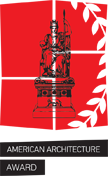

Peabody Plaza | Nashville - Tennessee | 2020
Architects: HASTINGS Architecture, LLC.
Design Team: David A. Baile, Chuck Gannaway, William W. Hastings, Robert White, Lauren McCloud, Emilee D. Wilson, and Paul Law
Landscape Architects: HAWKINS Partners Inc.
General Contractor: Brasfield & Gorrie, LLC.
Client: Eakin Partners, LLC.
Photographers: Hall + Merrick Photographers and McCaugherty McGinn Photography
Amid an ever densifying downtown, Peabody Plaza carves out a pocket park to create an even more vibrant Nashville. Located on a bluff overlooking the Cumberland River and adjacent to Ascend Amphitheater, Rolling Mill Hill is positioned in a vibrant live, work, and play neighborhood. Peabody Plaza replaces a 250-space surface parking lot to introduce a park and 290,000 square feet of office space with retail and restaurant opportunities poised to enliven the streetscape.
As part of a multi-site master plan, the design strategically buried a 1,005-car parking garage five stories below grade and positioned the building along the western edge of the site to create space for a pocket park. The 37,500-square-foot park anchors the site and, along with a promenade, establishes a pedestrian connection between SoBro and the Cumberland River Greenway. The north edge of the park is punctuated by an 8,000-square-foot restaurant featuring patio dining that engages both the park and promenade. Patterned with precast concrete panels, brick, Oko skin, and glass, the facade is an ever-changing reflection of the surrounding city.
The facade pattern is derived from the organization of the adjacent historic trolley barns. The pattern erodes to all-glass corners at both the southeast and northwest corners to denote major entry locations. The lobby frames views of the pocket park while its angular ceiling recalls the undulating topography of the Rolling Mill Hill neighborhood. The monumental stair promotes healthy activity and is backdropped by a vertical feature wall that reinterprets the building facade.